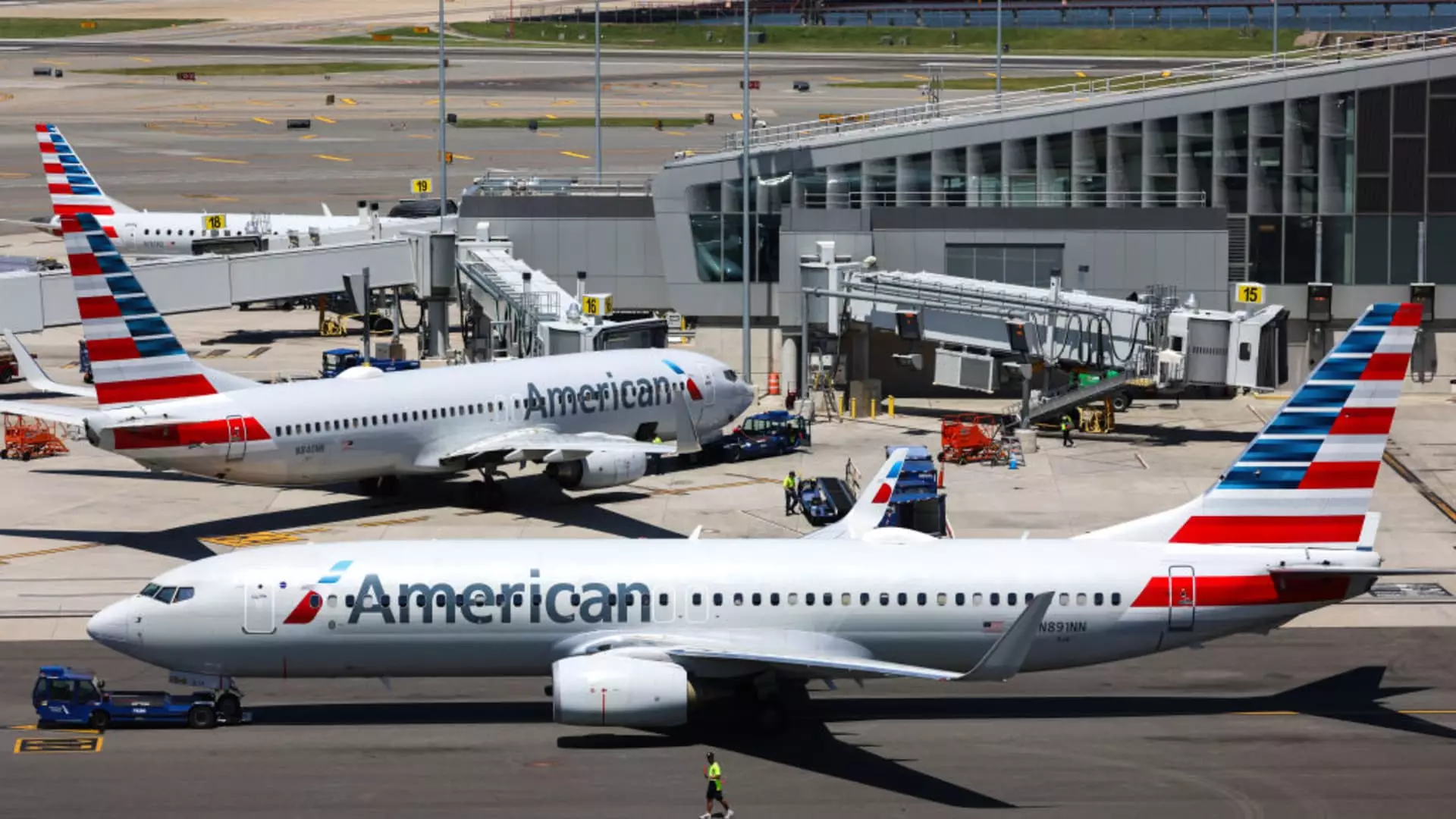In a competitive market where consumer loyalty and financial outcomes are intertwined, American Airlines appears poised to solidify a significant shift in its credit card partnership strategy. Recent discussions indicate that the airline is in the process of negotiating an exclusive agreement with Citigroup, potentially ending its long-standing collaboration with Barclays, which began following American’s acquisition of US Airways in 2013. This decision is not simply a routine business move; it reflects a broader trend where major brands are re-evaluating the structures and affiliations that drive their revenue streams. By consolidating under a single issuer, American Airlines aims to enhance its loyalty program’s financial performance and provide more value to its customers.
The nature of these partnerships is crucial, as they represent a large revenue source for airlines. Credit card issuers benefit from access to a dedicated customer base, resulting in considerable spending; however, the intricacies of financial agreements can dramatically impact profitability for both airlines and banks. It’s no secret that negotiations can be cutthroat in the airline industry as brands forge new alliances or renew existing ones. The pressure to secure favorable terms has intensified as companies seek larger revenue shares from the banks issuing their co-branded cards.
Numerous factors complicate the dynamics of these partnerships. Airlines like American rely heavily on the income generated from co-branded credit card programs. During challenging economic times, such as the COVID-19 pandemic, these revenue streams became lifelines for carriers in the face of plummeting passenger numbers. While travel spending dwindled, the accumulation of cardholders’ miles continued, underscoring the importance of these relationships. In fact, in recent years, growth in card spending has significantly outpaced revenue generated from passenger sales—a trend highlighting the financial prowess of loyalty programs in enhancing airline profitability.
However, this competitive landscape also raises questions regarding the sustainability of such partnerships. For instance, American Airlines’ performance in income generated from its loyalty program lags behind that of Delta Airlines, which capitalized on a highly lucrative relationship with American Express. In 2022, Delta earned nearly $7 billion from this partnership, outpacing American’s $5.2 billion with its existing credit card partners. Such discrepancies may compel American to rethink not just who their partner is, but how they operate within the broader context of customer engagement.
Despite the promising nature of altering the partnership landscape with Citigroup, the road ahead is fraught with potential obstacles, particularly concerning regulatory scrutiny. The current arrangement with Barclays could persist if regulatory bodies, such as the Department of Transportation, express concerns regarding market competition or consumer welfare. Should this happen, the anticipated transition may be hampered, leaving American Airlines to function under a dual-partner system that complicates the management of its loyalty program.
If an agreement with Citigroup were to materialize, it would mark a significant strategic shift, reflecting a trend among major brands favoring exclusivity. American Airlines, known for having the largest loyalty program in the airline industry, may stand to benefit from a cohesive strategy that aligns customer engagement with a singular credit card issuer like Citigroup. Historically, Citigroup has displayed a capacity for profitability, evidenced by their ability to attract high-value customers who tend to spend more and have lower default rates compared to competitors like Barclays.
While the anticipated contract could extend for a term of seven to ten years, thereby allowing Citigroup to stabilize its investment and build a customer base from the current Barclays clientele, there remains the underlying uncertainty regarding whether this restructuring will truly yield enhanced outcomes for American Airlines.
As industry dynamics continue to evolve, the implications of these partnerships extend beyond mere financial metrics. The crux of the matter lies in customer perception. The ongoing restructuring may reshape how American Airlines delivers value to its frequent flyers while also enhancing customer loyalty through improved product offerings. Both Citigroup and American Airlines recognize the importance of a collaborative approach in fostering greater shared value and growth, which could ultimately redefine their competitive positioning within the industry.
American Airlines’ shift toward a potential exclusive relationship with Citigroup is a testament to the growing complexities in the co-branded credit card marketplace. While the prospect of a new partnership carries many advantages, it is essential to navigate the challenges posed by regulatory oversight and market competition. As the airline continues its quest to innovate and improve its loyalty program, the results of these negotiations will be closely watched, not only by stakeholders within American Airlines but also by competitors and financial institutions alike.

